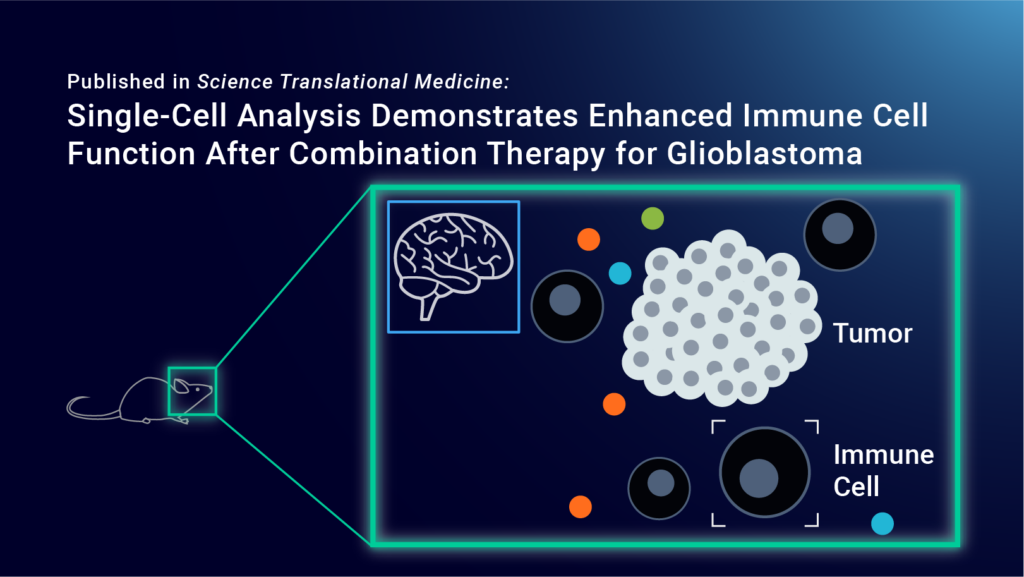Immunotoxin therapies have substantial potential and have already been demonstrated to improve outcomes in several types of cancers, but their efficacy has been limited. Cancer and tumor-associated cells oftentimes secrete proteins or express receptors that dampen immune activity to create an immunosuppressive environment that hinders therapeutic efficacy.
Molecules that stimulate immune activity can help to overcome cancer cell-mediated immunosuppression. CD40, a costimulatory molecule expressed by different types of cells, enhances T cell activity and anti-tumor immunity. Agonistic antibodies against CD40 have been shown to activate both adaptive and innate immunity and can be especially effective against cancer types with high expression of CD40, including glioblastoma (GBM). Functional analysis of immune cells shows how therapies affect immune activity, but bulk analysis may miss key characteristics of each individual cell. Bruker’s IsoCode® Single-Cell Secretome chips help researchers analyze individual cell function, providing deeper insights into immune response and the identity of cells driving immune activity.
Single-Cell Functional Proteomics Reveals Enhanced CD8+ Functionality
In a paper recently published in Science Translational Medicine, researchers evaluated a combination immunotoxin and anti-CD40 agonist therapy as a treatment for GBM. After determining safe dosages, the researchers showed that the combination therapy was able to induce immunological memory that ultimately improved survival in their GBM model. The researchers next examined the types of immune cells affected by the combination therapy and found that CD8+ tumor infiltrating lymphocytes (TILs) were necessary for the anti-tumor effects of the therapy.
Because the combination therapy was designed to stimulate immune cell function, the researchers used IsoCode® Single-Cell Secretome chips to characterize CD8+ TIL activity. While the individual therapies increased the number of polyfunctional cells, or cells secreting two or more cytokines, only the combination therapy resulted in highly polyfunctional cells secreting 5 or more cytokines. Assessing the individual cytokines being secreted showed that both the immunotoxin and combination therapy increased the diversity of secreted cytokines, indicating that the polyfunctional cells had a pro-inflammatory phenotype. By using single-cell functional phenotyping, the researchers were able to identify the subsets of CD8+ TILs driving antitumoral immune response and showed that their combination therapy could increase T cell function, in line with their hypothesis.
Evaluating Novel Immunotherapies with Single-Cell Analysis
Bruker’s single-cell functional analysis demonstrates how novel immunotherapies affect immune cell function at the single cell level, revealing the subsets of cells that drive immune response. Polyfunctionality is a powerful biomarker for anti-tumor efficacy and outcomes, and the use of single-cell functional analysis to characterize novel immunotherapies can identify key insights and help to guide early-stage development of new therapies.


